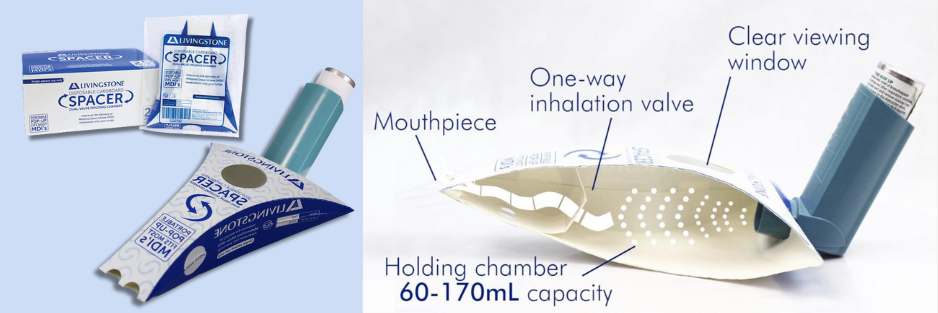
What happens during asthma
Asthma is a chronic inflammatory respiratory disease that affects people of all ages. Asthma is the result of inflammation and muscle tightening of the respiratory system. The respiratory system consists of the lungs, trachea, and breathing muscles – the diaphragm and intercostal muscles. The lungs contain a smaller interconnected system known as the bronchial tree which includes; alveoli, bronchioles and bronchi.
Pathophysiology of asthma
Asthma occurs primarily in the bronchial tree. Gas exchange is the movement of oxygen through the body’s systems, Which the circulatory system supplies oxygen and removes carbon dioxide from organs. An asthma event begins with a triggered by airborne substances. Examples include pollen, grasses, or dust. Equally, asthma may also be triggered by changes in weather or heavy exercise. The trigger causes a bronchospasm (spasm of the muscles surrounding the bronchi), inflammation and increased mucus production. These elements combined result in the narrowing of the air passage, thus reducing the amount of air able to reach the alveoli for gaseous exchange. In moderate to severe cases audible wheeze can be heard without a stethoscope.

How is it Diagnosed
Asthma is diagnosed with a lung function test such as a spirometry test. This test compares your breathing functions such as expiratory force, lung volume and pressure before and after an inhaler. Spirometry is a difficult test, where most patients will cough or find it difficult due to the intensity of breath work required. This is why Asthma is rarely diagnosed in children under five. Asthma may be diagnosed at any time in life and is a chronic illness. This means there is a cure however, there are significant symptom management options to reduce the impact on life. Asthma complications can be fatal however, medical intervention and management have improved significantly, meaning individuals can lead a very active, healthy lifestyle.
Treatment Options
The most common reliever medication is salbutamol, commonly known as Ventolin. There are two subclasses of medications depending on symptoms and severity, these are relievers and preventers. The medication works by relaxing tightened muscles and reducing the amount of inflammation to assist breathing. Inhalers are more efficient at delivering medication when used with a spacer. This allows the medication to disperse in the air, increasing availability for the lungs to absorb. The primary method is using a spacer to increase air exposure before inhaling. Alternatively, a nebuliser automates the process making medication administration easier for the user.
Effectiveness of Cardboard Spacers
Livingstone’s Disposable Spacer is designed to be an eco-friendly and easy-to-use spacer for metered dose inhalers. Unlike traditional bulky spacers, its flat design makes it easy to store and transport discreetly. The spacer is made from recyclable materials and has been independently tested by an Aerosol Research Group to ensure it exceeds regulations and requirements.

In terms of effectiveness, Livingstone’s Disposable Spacer has been tested for its ability to deliver medication through a pressurised metered dose inhaler. The particle size of the medication is crucial for effective aerosol delivery. With a particle size of 2.56 μm, Livingstone’s Disposable Spacer allows for effective absorption into the alveoli, where drug absorption into the bloodstream is most effective and faster acting. The mean respirable dose amount of 25.8 μg demonstrates significant medication delivery to the user, enabling fast treatment of asthma attacks.

day-to-day management
Triggers
Whilst you cannot always avoid all triggers completely, some triggers will be worse than others. Equally, some triggers may be associated with allergies.
Top Tip!
Make notes when you experience bad asthma triggers and make a conscious effort to reduce your exposure to these. Some triggers will be worse than others. For example, using a preventer inhaler before being exposed to these triggers can reduce the severity of an attack.
Medication
Puffers or inhalers have a dosage counter on them to inform you when you are getting low on doses available. Ensure you keep a puffer with you or numerous in different locations as an asthma attack will not resolve itself without medical intervention.
Top Tip!
Using a spacer or nebuliser in medical settings for puffer medication increases the effectiveness of the medication.
